Related Research Articles

Marcel Albert Carné was a French film director. A key figure in the poetic realism movement, Carné's best known films include Port of Shadows (1938), Le Jour Se Lève (1939), The Devil's Envoys (1942) and Children of Paradise (1945); the latter has been cited as one of the great films of all time.
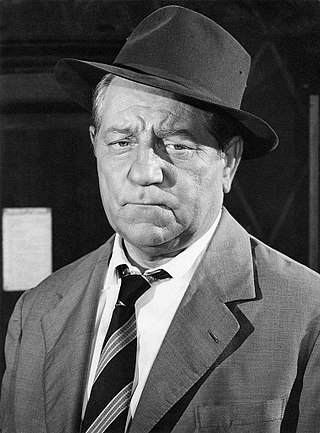
Jean Gabin was a French actor and singer. Considered a key figure in French cinema, he starred in several classic films including Pépé le Moko (1937), La grande illusion (1937), Le Quai des brumes (1938), La bête humaine (1938), Le jour se lève (1939), and Le plaisir (1952). During his career he twice won both the Silver Bear for Best Actor from the Berlin International Film Festival and the Volpi Cup for Best Actor from the Venice Film Festival respectively. Gabin was made a member of the Légion d'honneur in recognition of the important role he played in French cinema.

Julien Duvivier was a French film director and screenwriter. He was prominent in French cinema in the years 1930–1960. Amongst his most original films, chiefly notable are La Bandera, Pépé le Moko, Little World of Don Camillo, Panic (Panique), Deadlier Than the Male and Marianne de ma jeunesse.

Jacques Feyder was a Belgian actor, screenwriter and film director who worked principally in France, but also in the US, Britain and Germany. He was a director of silent films during the 1920s, and in the 1930s he became associated with the style of poetic realism in French cinema. He adopted French nationality in 1928.

Michel Simon was a Swiss-French actor. He appeared in many notable French films, including La Chienne (1931), Boudu Saved from Drowning (1932), L'Atalante (1934), Port of Shadows (1938), The Head (1959), and The Train (1964).
Nino Frank was an Italian-born French film critic and writer who was most active in the 1930s and 1940s. Frank is best known for being the first film critic to use the term "film noir" to refer to 1940s US crime drama films such as The Maltese Falcon.
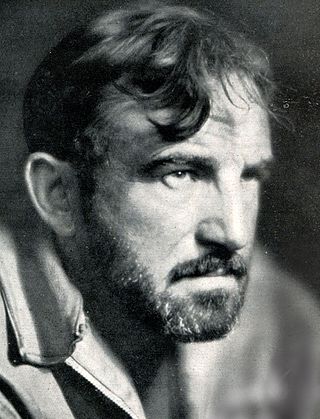
Charles-Marie Vanel was a French actor and director. During his 76-year film career, which began in 1912, he appeared in more than 200 films and worked with many prominent directors, including Alfred Hitchcock, Luis Buñuel, Jacques Feyder, and Henri-Georges Clouzot. He is perhaps best remembered for his role as a desperate truck driver in Clouzot's The Wages of Fear for which he received a Special Mention at the Cannes Film Festival in 1953.
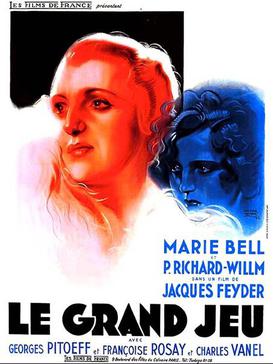
Le Grand Jeu is a 1934 French drama film directed by Jacques Feyder and starring Pierre Richard-Willm, Marie Bell, Charles Vanel and Françoise Rosay. It is a romantic drama set against the background of the French Foreign Legion, and the film was an example of poetic realism in the French cinema. The title Le Grand Jeu refers to the practice of reading the cards. Blanche asks whether her client wants the 'full works', the whole story: "Alors... je te fais le grand jeu?"

Sylvia Bataille was a French actress of Romanian-Jewish descent. When she was twenty, she married the writer Georges Bataille with whom she had a daughter, the psychoanalyst Laurence Bataille (1930–1986). Georges Bataille and Sylvia separated in 1934 but did not divorce until 1946. Starting in 1938, she was a companion of the psychoanalyst Jacques Lacan with whom, in 1941, she had a daughter, Judith. Sylvia Bataille married Jacques Lacan in 1953.
Gaston Modot was a French actor. For more than 50 years he performed for the cinema working with a number of great French directors.
René Lefèvre was a French actor and writer. Throughout his career, he worked with several notable directors, like Jean Renoir, Jean-Pierre Melville, Jules Dassin, and René Clair.

Maurice Jaubert was a prolific French composer who scored some of the most important films of the early sound era in France, including Jean Vigo’s Zero for Conduct and L'Atalante, and René Clair’s Quatorze Juillet and Le Dernier Milliardaire. Serving in both world wars, he died in action during World War II at the age of 40.
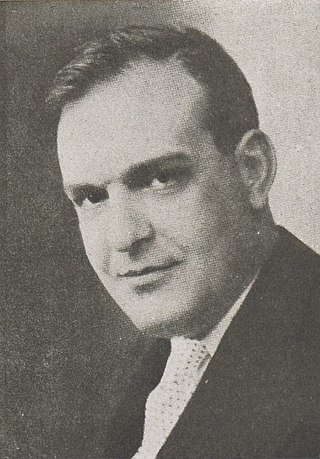
Charles Spaak was a Belgian screenwriter who was noted particularly for his work in the French cinema during the 1930s. He was the son of the dramatist and poet Paul Spaak, the brother of the politician Paul-Henri Spaak, and the father of the actresses Catherine Spaak and Agnès Spaak.
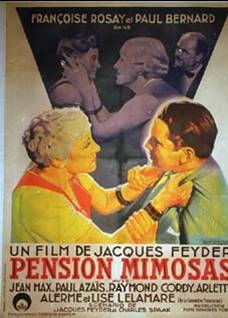
Pension Mimosas is a 1935 French drama film directed by Jacques Feyder. Based on an original scenario by Feyder and Charles Spaak, it is a psychological drama set largely in a small hotel on the Côte d'Azur, and it provided Françoise Rosay with one of the most substantial acting roles of her career. It was produced by the French subsidiary of the German company Tobis Film.
Édouard Delmont was a French actor born Édouard Marius Autran in Marseille. He died in Cannes at age 72.
Léonce-Henri Burel was a French cinematographer whose career extended from the silent era until the early 1970s. He was the director of photography on more than 120 films, working almost exclusively in black-and-white.
Gustave Honoré Hamilton was a 20th-century Belgian film actor.

Calligrafismo is an Italian style of filmmaking relating to some films made in Italy in the first half of the 1940s and endowed with an expressive complexity that isolates them from the general context. Calligrafismo is in a sharp contrast to Telefoni Bianchi-American style comedies and is rather artistic, highly formalistic, expressive in complexity and deals mainly with contemporary literary material, above all the pieces of Italian realism from authors like Corrado Alvaro, Ennio Flaiano, Emilio Cecchi, Francesco Pasinetti, Vitaliano Brancati, Mario Bonfantini and Umberto Barbaro.
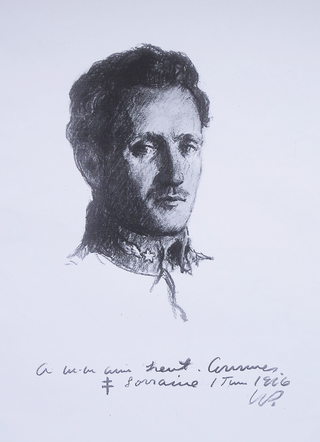
Marcel Louis Henry Joseph Léon Courmes born June 13, 1885 in Marseille and died May 5, 1950 in Neuilly-sur-Seine:, was a French officer and aviator during the World War I. He subsequently became one of the first French sound cinematographers.
References
- 1 2 Thompson, Kristin, Bordwell, David. (2010) Film History: An Introduction, Third Edition, New York, NY: The McGraw-Hill Companies. p. 265-268
- ↑ Susan Hayward Cinema studies: the key concepts, Routledge, 2006, p.151
- ↑ The Criterion Collection
- ↑ Movie movements that defined cinema: Poetic realism|Movies|Empire